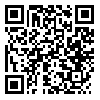BibTeX | RIS | EndNote | Medlars | ProCite | Reference Manager | RefWorks
Send citation to:
URL: http://jrsm.khu.ac.ir/article-1-2467-en.html
2- Kharazmi University
One of the main goals of the mission of experts motor learning is maximize the quality of learning experiences and optimize the educational environment .The purpose of this study was focusing on the effects of learning model, skilled model and positive self-review crawl on learning in children aged 9 to 11 years in Alborz Province. Participants of the random and available samples divided into different groups. Thus, Participants of all groups practiced three time in a week which have 20 attempt to practice in every session and totally all the crawl swimming exercises were finished at 12 session. at the end of the twelfth session acquisition test and a week after the end of the last session retention and transfer tests were taken. The dependent variable was the quality of Participants which was performed by swimming instructor-notch swimming using crawl skills assessment Czech list. The results indicate the advantage of the three types of model crawl performance and significant difference between groups in the acquisition, retention and transfer test) p<0/05(.Also, positive self-review and learning model groups was considerably better than skilled model and control group in Acquisition test. Furthermore, skilled model group scores are really higher than the control group. Positive self-review groups had the best performance in the retention and transfer tests in comparison with the other groups (learning model, skilled model and control). After that, learning model group was more effective than the rest of them (skilled model and Control groups). Finally, control groups had lowest performance among all mentioned groups
Received: 2017/04/10 | Accepted: 2017/07/1 | Published: 2020/08/31
| Rights and permissions | |
 | This work is licensed under a Creative Commons Attribution-NonCommercial 4.0 International License. |








